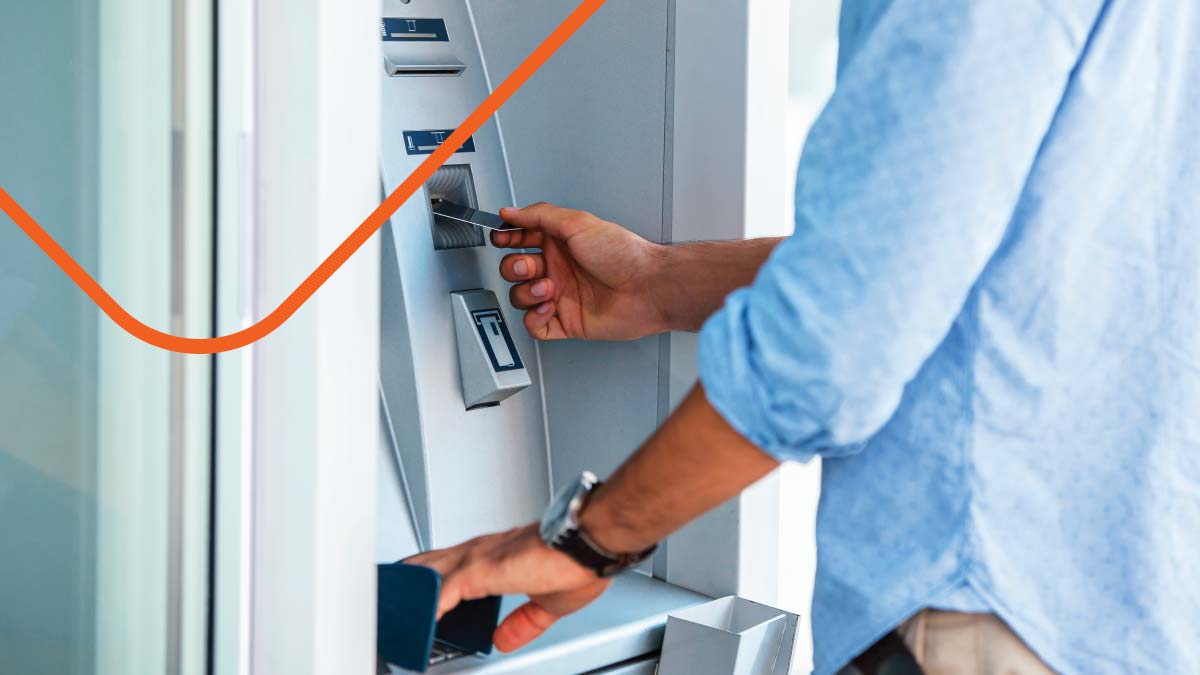In today’s digital age, automated teller machines (ATMs) are vital in providing convenient and efficient financial services. However, like any other complex device, ATMs require regular maintenance and repairs to operate smoothly. This is where ATM repair technicians come in. They are highly skilled professionals who possess the necessary knowledge, tools, and training to ensure the proper functioning of these machines. This article will explore the various aspects of equipping ATM repair technicians for success.

Understanding the role of an ATM repair technician
Before discussing the intricacies of the role, it’s essential to understand the responsibilities of an ATM repair technician. These individuals troubleshoot, repair, and maintain ATMs to guarantee optimal functionality. They help prevent downtime, ensure continuous ATM operation, and minimize disruptions to banking services.
ATM repair technicians play a crucial role behind the scenes, ensuring the smooth functioning of the financial world. Their dedication ensures that ATM users can access cash reliably when needed. However, their responsibilities extend beyond mere repairs.
One of the key responsibilities of an ATM repair technician is performing routine maintenance checks to identify potential issues before they escalate. They meticulously inspect each component, keeping everything in perfect working order. This proactive approach helps prevent unexpected breakdowns and ensures a seamless banking experience for customers.
Key responsibilities of ATM repair technicians
ATM repair technicians use problem-solving and analytical skills when troubleshooting malfunctioning machines. They meticulously examine each component, uncovering the root cause of the issue. Once an issue is identified, they leverage their expertise to fix the problem and restore the ATM to operational status.
An ATM repair technician’s primary responsibilities include:
- Performing routine maintenance checks to identify potential issues before they escalate.
- Detecting and diagnosing malfunctions in machines.
- Repairing or replacing faulty components.
- Ensuring timely updates of software and firmware.
- Conducting quality control tests to ensure proper functionality after repairs.
Required skills and knowledge for the job
ATM repair technicians must possess a diverse skill set to excel in their profession. Some essential skills and knowledge include:
- Strong problem-solving and analytical abilities to diagnose and resolve complex issues.
- Thorough understanding of the electrical and mechanical components of ATMs.
- Proficiency in reading schematics and technical manuals.
- Up-to-date knowledge of emerging technologies in the field.
- Effective communication skills to interact with customers and colleagues.
In addition to their technical expertise, ATM repair technicians must have excellent communication skills. They often interact with customers who are frustrated and anxious about their banking experience being disrupted. Empathizing with their concerns and explaining the situation clearly and concisely is crucial in maintaining customer satisfaction.
Furthermore, staying up-to-date with the latest advancements in ATM technology is essential for an ATM repair technician. With banking systems constantly evolving, these professionals must continuously expand their knowledge to keep pace with the ever-changing landscape. This ensures they can adapt to new challenges and provide efficient solutions to any issues.
ATM repair technicians need access to many tools to carry out their responsibilities effectively. These tools can be broadly classified into two categories: hardware tools and software tools.
Regarding hardware tools, ATM repair technicians rely on a carefully selected toolkit. One of the most essential tools in their kit is the multimeter. This device allows technicians to measure electrical parameters during troubleshooting, providing valuable insights into the root cause of any electrical issues.
A screwdriver set is also a must-have for opening and assembling ATM components. With different types and sizes of screwdrivers, technicians can easily navigate the intricate world of ATM hardware.
Another crucial hardware tool for ATM repair technicians is the fiber optic inspection scope. This specialized tool enables technicians to inspect and clean fiber optic connections to optimize performance and prevent potential disruptions. In addition, power tools such as drills and impact drivers play a vital role in efficiently installing and removing components. These tools provide the necessary power and precision to handle the demanding nature of ATM repairs.
Diagnostic equipment is also indispensable to an ATM repair technician’s toolkit. These specialized devices identify and analyze specific issues within the ATM, enabling technicians to pinpoint the root cause of any problems. With diagnostic equipment at their disposal, technicians can efficiently troubleshoot and resolve issues, minimizing downtime and ensuring the smooth operation of ATMs.
While hardware tools are essential, software tools are equally invaluable for ATM repair technicians. These tools aid technicians in diagnostics and troubleshooting, making their jobs more efficient and effective. One commonly used software tool is remote monitoring software, which enables technicians to monitor ATM performance and resolve issues remotely. This saves time and resources by eliminating the need for on-site visits for minor issues.
Data recovery software is another important tool that allows technicians to retrieve critical data in case of software or hardware failures. With this software, ATM repair technicians can ensure that no valuable data is lost during the repair process, providing peace of mind to the technicians and the ATM owners.
Additionally, ATM simulation software plays a vital role in testing and simulating various scenarios. This allows technicians to identify and rectify software issues before they become major problems, supporting the smooth operation of ATMs.
Lastly, security software is paramount to protect ATMs from cyber threats and enhance data security. With the increasing sophistication of cyber attacks, ATM repair technicians rely on robust security software to safeguard sensitive information and prevent unauthorized access to ATMs. This software acts as a shield, providing additional protection against potential threats.
The tools used by ATM repair technicians are diverse and essential for their work. Each tool is crucial in ensuring smooth ATM operation and maintenance, from hardware tools like multimeters and screwdriver sets to software tools like remote monitoring and security software. With these tools, ATM repair technicians are well-equipped to tackle issues, ensuring continued functionality and security.
Training and certification for ATM repair technicians
Continuous learning and professional development are essential for ATM repair technicians. Proper training and certification enhance technicians’ skills and validate their expertise. Let’s explore the significance of professional training and recognized certifications within the industry.
ATM repair technicians play a critical role in the smooth operation of automated teller machines. They are responsible for maintaining, repairing, and troubleshooting these complex devices to keep them functioning optimally. With rapid advancements in technology, technicians must undergo continuous training to stay abreast of the latest developments in the field.
Importance of professional training
Professional training programs equip technicians with the latest industry knowledge and best practices. These programs cover various aspects of ATM repair, including ATM operations, troubleshooting techniques, and security protocols. By staying updated through training, technicians can confidently tackle any challenges that come their way.
Moreover, professional training enhances technical skills and fosters technicians’ critical thinking and problem-solving abilities. They learn to analyze complex issues, identify root causes of problems, and implement effective solutions efficiently. This holistic approach to training ensures that technicians are well-equipped to handle various issues that may arise during ATM maintenance and repair tasks.
Recognized certifications in the industry
Several reputable organizations offer certifications specifically designed for ATM repair technicians. These certifications validate the technician’s skills and expertise, making them more reliable and trustworthy. Some prominent certifications in the industry include:
- ATM Industry Association (ATMIA) Certified ATM Professional (CATMP)
- International Society of Certified Electronics Technicians (ISCET) Certified ATM Technician (CAT)
- CompTIA A+ Certification
These certifications demonstrate a technician’s ATM repair and maintenance proficiency and open new career advancement opportunities. Employers often prefer certified technicians as they bring higher credibility and assurance. Additionally, certified technicians may command higher salaries and have access to specialized training programs to further enhance their skills.
Safety measures for ATM repair technicians
When working on ATMs, technicians must prioritize safety. They must be aware of potential hazards and adhere to safety protocols to mitigate risks. Let’s explore safety measures technicians should follow to protect themselves and others.

Personal protective equipment (PPE) for technicians
Wearing appropriate personal protective equipment is a fundamental aspect of technician safety. Some essential PPE for ATM repair technicians include:
- Safety goggles: Protect technicians’ eyes from potential debris or harmful substances.
- Gloves: Prevent direct contact with hazardous materials.
- Steel-toed boots: Provide foot protection against heavy objects or accidental slips.
- Earplugs: Shield ears from loud noises during repairs or maintenance.
Safety protocols in ATM repair
ATM repair technicians should always adhere to safety protocols to minimize accidents and injuries. Some key safety protocols include:
- Ensuring proper lockout/tagout procedures to protect against electrical hazards.
- Obeying traffic regulations and setting up appropriate traffic control measures when working on external ATMs.
- Using designated tools and equipment for specific tasks to prevent injuries.
- Utilizing proper lifting techniques to prevent strains or musculoskeletal injuries.
The future of ATM repair: emerging technologies
The landscape of ATM repair is constantly evolving and driven by technological advancements. ATM repair technicians must adapt to these changes to remain competitive and ensure their continued success. Let’s explore some emerging technologies that will shape the future of ATM repair.
Impact of digitalization on ATM repair
As ATMs become more integrated with digital systems and online platforms, ATM repair technicians need to develop expertise in areas such as:
- Network troubleshooting and security to address connectivity issues and protect against cyber threats.
- Software integration and remote management to efficiently control and maintain multiple ATMs.
- Mobile and contactless payment technologies to address the changing needs of customers.
Adapting to technological changes in the field
ATM repair technicians must keep up with emerging technologies to stay relevant. This involves continuous learning and upskilling in areas like:
- Data analytics and machine learning to leverage ATM performance data for predictive maintenance.
- Robotics and automation to streamline routine maintenance tasks and expand operational efficiency.
- Internet of Things (IoT) connectivity to monitor and control ATMs remotely.
Conclusion
Equipping ATM repair technicians for success goes beyond providing them with the necessary tools and knowledge. The industry demands continuous learning, adherence to safety protocols, and embracing emerging technologies. By prioritizing training, certifications, and safety measures, ATM repair technicians can navigate the field’s challenges and contribute to the smooth functioning of ATMs, optimizing customer experience and satisfaction.
Are you looking to connect with repair technicians? Start by scheduling an introductory call with Field Nation today. Find out why we’re the top choice for connecting you with skilled contract technicians who can maintain your equipment for seamless operation.







